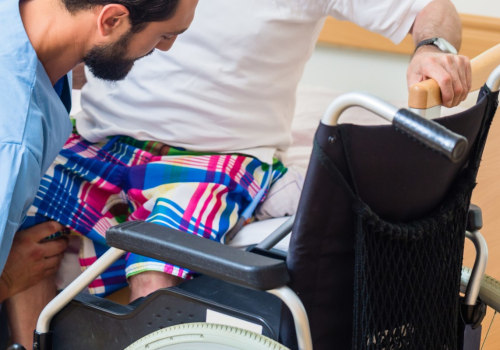Hospice is a medical care designed for the end of a person's life. The purpose of hospice is to improve the quality of life that remains. Hospice provides relief from pain and other symptoms, as well as emotional, psychosocial, and spiritual help to support you and your family. Hospice programs typically use a multidisciplinary team approach, which includes the services of a nurse, doctor, social worker, and clergy to provide care.
Additional services provided include medications to control pain and manage other symptoms; physical, occupational and speech therapy; medical supplies and equipment; medical social services; dietary and other counseling; ongoing home care in times of crisis; and bereavement services. While hospice care is not intended to cure terminal illness, it can treat potentially curable conditions, such as pneumonia and bladder infections, with brief hospitalizations if needed. Hospice programs also offer respite care workers, people who are usually trained volunteers, who take care of the patient so that the family or other primary caregivers can leave the house for a few hours. Volunteer care is part of the philosophy of the ho.
Increasingly, people are choosing hospice care at the end of life. Hospice care focuses on the care, comfort, and quality of life of a person with a serious illness nearing the end of life. Hospice is for people who have limited life expectancy. Hospice is for patients whose condition is such that a doctor would not be surprised if the patient died within the next six months.
This does not mean that the patient will die within the next six months; it simply means that they have a condition that makes dying a realistic possibility. On the other hand, palliative care offers somewhat similar services, but for patients who will not necessarily die in the next six months. Learn about the differences between hospice and palliative care. Hospice care is a form of palliative care that focuses on the terminally ill.
This means that to qualify for hospice, you must have a medical prognosis of less than six months to live. This phrase can be very frightening for one to confront and probably raises more questions such as “Does this mean that hospice accelerates death? , or “Does it mean that if someone receives hospice services in the wrong way, will their life be shortened?. Hospice care is for someone with a terminal illness who is expected to have six months or less to live. But hospice care can be provided as long as the person's doctor and palliative care team certify that the condition continues to limit life.
This idea comes from Medicare, USA. UU. ,. Government organization that pays much of the health care of older Americans.
Medicare pays for hospice care if your doctor thinks you have 6 months to live or less, your cancer doesn't respond to treatment, and your medical condition doesn't improve. The main goal of including palliative care in hospice services is to help patients feel comfortable while allowing them to enjoy the last stage of life. You should ask the hospice what the role of your own doctor is once care begins and if the same nurse will visit you during the week. Palliative care can help people achieve their personal goals, such as spending less time in the doctor's office and more time with their loved ones.
In addition to improving quality of life and helping with symptoms, palliative care can help patients understand their medical treatment options. Hospice care is often helpful for conditions such as cancer, heart disease, COPD (emphysema), and advanced dementia. Regularly scheduled meetings, often led by the hospice nurse or social worker, keep family members informed about their condition and what to expect. As part of hospice care, palliative care looks at how the cancer experience is affecting the whole person and helps relieve symptoms, pain, and stress.
A member of the hospice team visits regularly, and someone is usually always available by phone 24 hours a day, seven days a week. The hospice team can refer family and caregiver friends to other medical or professional care, if needed. You can stay in a hospice beyond that time if your doctor and team decide that you have little time left to live. Seriously ill patients who have decided that their priority is to have the best possible quality of life are the people most suitable for hospice.
Palliative care is specialized medical care for people living with a serious illness, such as cancer or heart failure. Hospice programs are usually home-based, but sometimes provide services outside the home, in independent centers, in nursing homes, or inside hospitals. People who receive palliative care often live longer than people with advanced cancer who receive regular cancer treatments. This means that you receive palliative care in a nursing home, hospice center (sometimes called a hospice), or other place.
Not only are hospice services fully covered, but medical supplies and prescriptions related to pain management and comfort are also covered. . .












